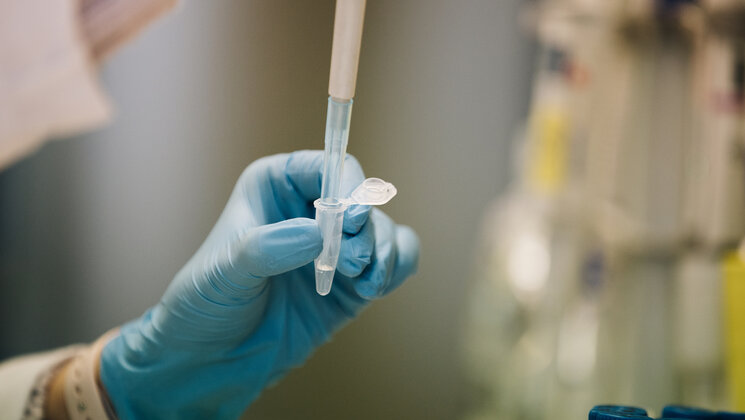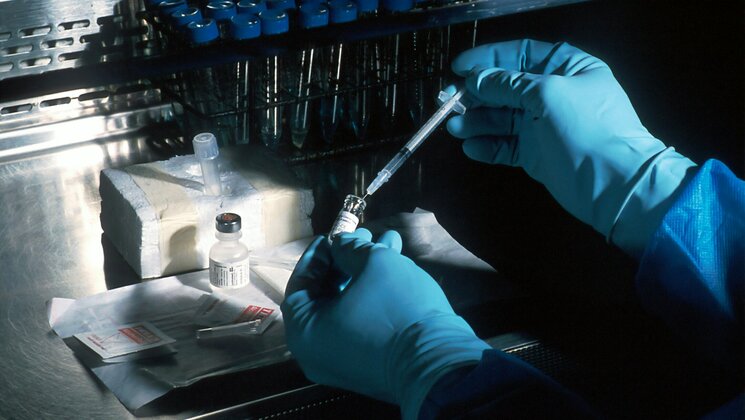Metabolomics Core Facility
The metabolomics core facility provides knowhow
- on metabolomics experiment design,
- performs mass-spectrometry based analyzes of metabolites/metabolic profiles and
- can also help with the analysis of metabolomics data.
What exactly does “metabolomics” mean?
Metabolomics covers a variety of different approaches for studies of low molecular weight compounds in biological systems. Lipids, amino acids, nucleobases, organic acids, alkaloids, low molecular weight drugs and many others are covered by the “metabolite” umbrella term. Short peptides with a few amino acids in length can also be included, but longer peptides, proteins, nucleic acids and oligosaccharides require specific methods not typically used in metabolomics.
Metabolomics is usually done with nuclear magnetic resonance or mass spectrometry. The latter is more sensitive and allows a wider variety of specific analyses, but has the drawback of not being properly quantitative per se. Quantitative values for specific metabolites can be achieved using internal and external standards.
In our core facility we use mass-spectrometry approach for metabolomics studies.
Shimadzu Prominence – QTRAP 3200
A robust and versatile system for different types of chromatographic separations and mass scans (see below for details). While QTRAP 3200 is an older and slightly less sensitive model than QTRAP 4500, it comes with photospray and nanospray ion sources in addition to the usual Turbo V Ionspray electrospray allowing photoionization or analysis of samples in submicroliter quantities. The chromatography system can be equipped with a fluorescence detector to allow detection of fluorescence in parallel of mass spectrum.
Chromatography modes
The chromatographic system can be used only as solvent delivery and injection module with no chromatographic
separation of samples. This is the fastest analysis with a few minutes per analysis and therefore preferred whenever
possible. In case of complex mixtures or high salt concentrations it may not be sufficient to give reliable results.
C18 analytical columns are the first choice if chromatographic separation is needed. HILIC columns are also
available. Analysis time with any column will increase to 30-60 min per sample. The core facility prefers to use its own
columns, if you wish to bring your own column please contact the staff first.
Mass spectrometry scan modes
- Enhanced mass spectrum (EMS) – mass spectrum in its usual meaning with m/z vs signal intensity plots. Typical resolution 1 Da and m/z range 50-1500.
- Fragmentation analysis – necessary for molecular identification and building of precursor and MRM scans.
- Multiple reaction monitoring (MRM) – uses parent ion m/z and the m/z of a fragment from thereof. Allows most sensitive scans for specific compounds and is the preferred method for quantitative analysis. One analysis can use hundreds of MRM ion pairs allowing simultaneous quantification of multiple compounds.
- Precursor ion scan – by using the m/z of a fragment searches for compounds that give the m/z upon fragmentation. Particularly useful in studies of drug biotransformation or groups of metabolites with a similar moiety (e.g. acylcarnitines)
- Enhanced resolution – although QTRAPs are “low resolution” mass spectrometries, this specific mode can be used to enhance the resolution in a narrow range for better determination of isotopic distribution, which may be useful in compound identification.
Agilent 1200 - QTRAP 4500
More sensitive than the QTRAP 3200 system. Additionally, the sample introduction system accepts various 96-384 well plates and is therefore suited for commercial kits such as AbsoluteIDQ p180 kit from BioCrates.
Chromatography modes
The chromatographic system can be used only as solvent delivery and injection module with no chromatographic separation of samples. This is the fastest analysis with a few minutes per analysis and therefore preferred whenever possible. In case of complex mixtures or high salt concentrations it may not be sufficient to give reliable results.
C18 analytical columns are the first choice if chromatographic separation is needed. HILIC columns are also available. Analysis time with any column will increase to 30-60 min per sample. The core facility prefers to use its own columns, if you wish to bring your own column please contact the staff first.
Mass spectrometry scan modes
- Enhanced mass spectrum (EMS) – mass spectrum in its usual meaning with m/z vs signal intensity plots. Typical resolution 1 Da and m/z range 50-1500.
- Fragmentation analysis – necessary for molecular identification and building of precursor and MRM scans.
- Multiple reaction monitoring (MRM) – uses parent ion m/z and the m/z of a fragment from thereof. Allows most sensitive scans for specific compounds and is the preferred method for quantitative analysis. One analysis can use hundreds of MRM ion pairs allowing simultaneous quantification of multiple compounds.
- Precursor ion scan – by using the m/z of a fragment searches for compounds that give the m/z upon fragmentation. Particularly useful in studies of drug biotransformation or groups of metabolites with a similar moiety (e.g. acylcarnitines)
- Enhanced resolution – although QTRAPs are “low resolution” mass spectrometries, this specific mode can be used to enhance the resolution in a narrow range for better determination of isotopic distribution, which may be useful in compound identification.
Requirements for the sample
The main requirement is that the analyte must be in a solution. Solids and suspensions are not compatible with the ionization methods used. The solute can be either water or organic solvent based. As long as this requirement is fulfilled it matters not whether the sample originally was blood, bone, skin, bark or anything else. From blood components plasma is preferred over serum, but also the latter is not contraindicated. We do not accept radioactive samples or other materials that require special precautions (e.g. certain infectious materials). If necessary, the core facility staff can help with the sample preparation, although in most cases we expect it to be done by users. The needed amount depends on analyzes, but 50-200 microliters is usually sufficient.
Types of analysis
Global metabolic profiling or “untargeted” analysis generates simple EMS spectra of the samples, which can later be analyzed by multivariate statistics or any other means to filter out differences between samples. It does not require preliminary decisions what kind of metabolites could be different between the samples and allows to determine if there are any differences at all. If differences are found it requires additional work to identify the metabolites, and this process is not guaranteed to succeed (i.e. In the end there may be mass spectrometry signals that are highly specific to a group of samples, but we cannot tell for sure, which metabolite it is).
Qualitative determination of specific compounds. If the sample is expected to have high amount of the substance of interest (e.g. chemical synthesis product) an EMS spectra may be sufficient to confirm the presence of correct m/z value. If the sample is expected to contain only trace amounts of the substance (e.g. a drug in biological tissue), more complicated analyses (fragmentation and MRM) may be required. In this case also a sample of the substance may be necessary in order to determine the optimal conditions for its detection in biological matrix.
Quantitative analyzes of specific compounds. Quantification generally requires internal and external standards, rising the cost and time of analyses. Ideally for each quantified substance its pure form and isotope labeled analogue are desired, but these are not always available.
Quantitative analyzes with commercial kits. We are running analyses with AbsoluteIDQ p180 kit from BioCrates. For other commercial kits please consult with the staff.
Rates
Two different ways exist for covering the costs of analyses. First, we can offer a service with prices listed below. However, our staff is limited and is most of the time working with their own research projects. Thus, please arrange an agreement before sending any samples. Second, we may be interested in scientific cooperation in which case part of the cost is covered by us, but we expect to be involved in experiment design, data analysis, interpretation and manuscript writing and publishing.
Training & courses
Generally, the staff prefers to operate the mass-spectrometry by themselves since it is not cost-effective to train a new user for a limited amount of analyzes. However, personal training is possible for long-term projects and co-operations.



